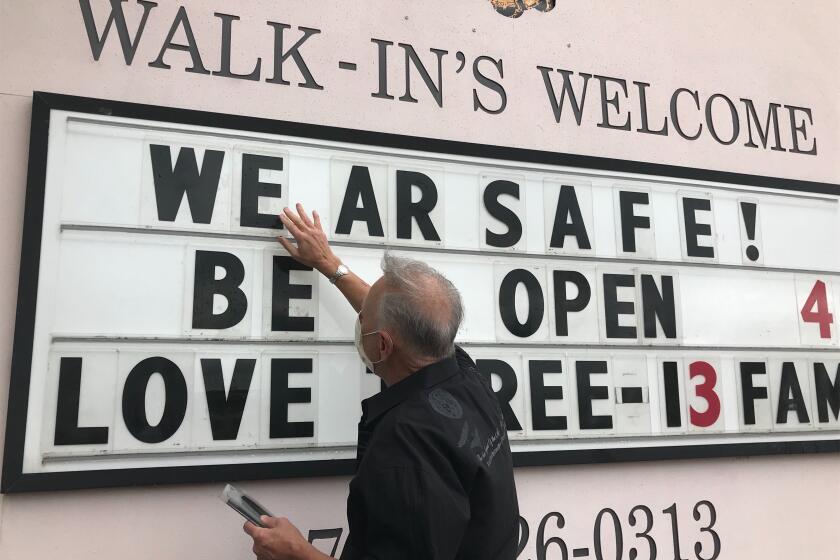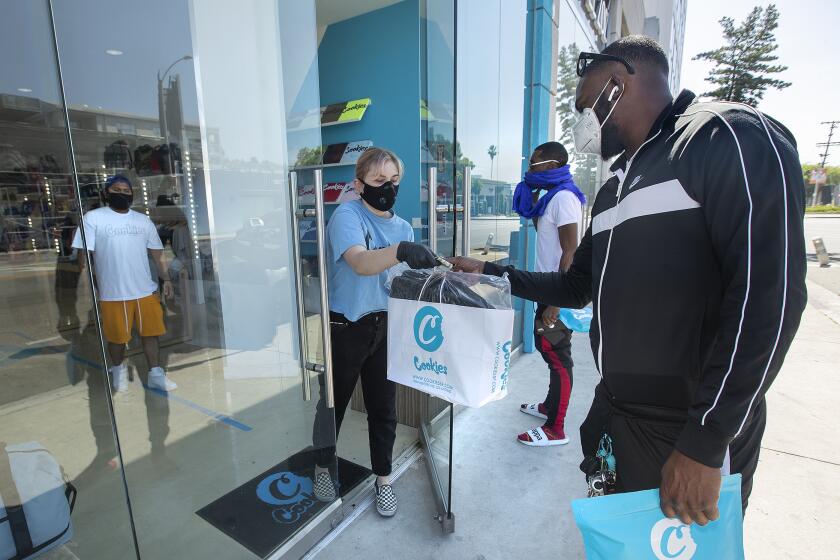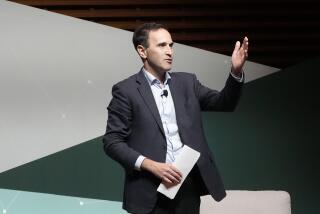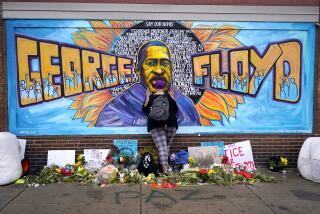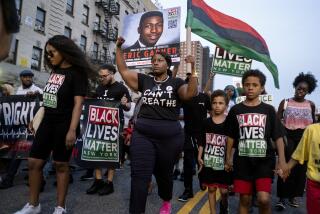Experts see little evidence that protests spread the coronavirus in U.S.
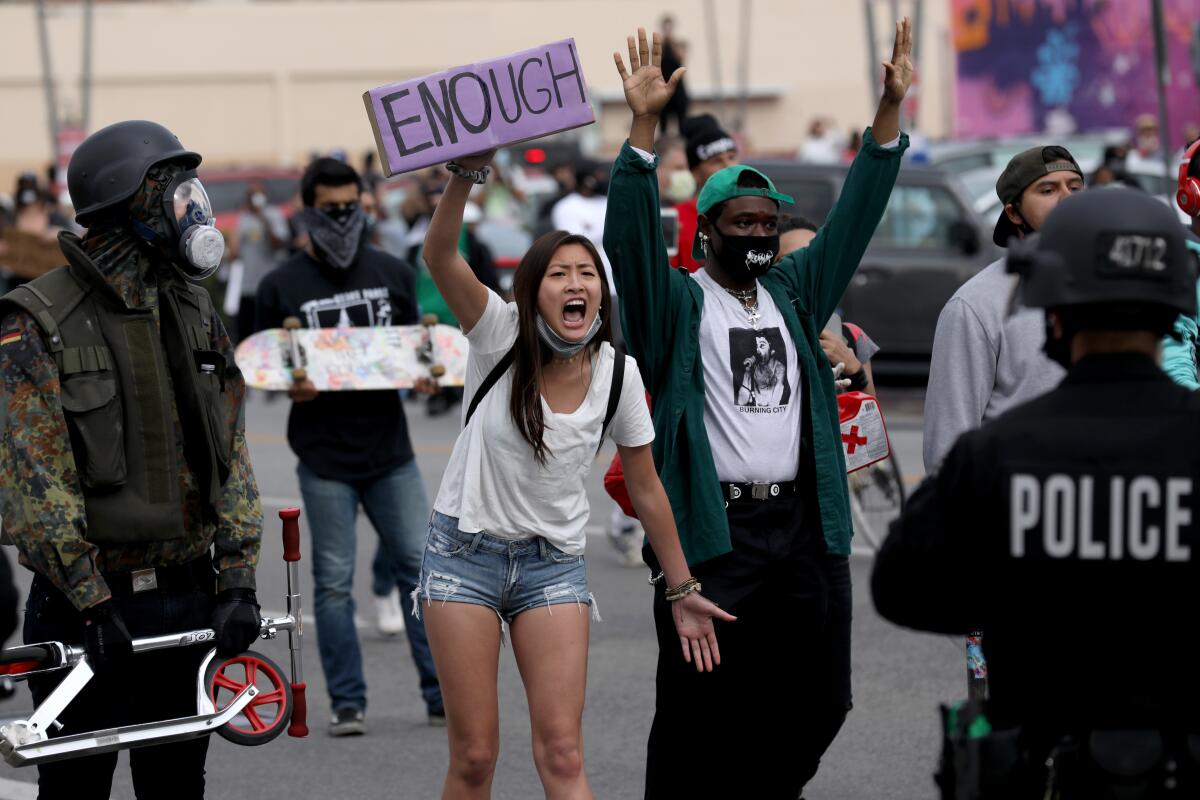
There is little evidence that the protests that erupted after George Floydâs death caused a significant increase in U.S. coronavirus infections, according to public health experts.
If the protests had driven an explosion in cases, experts say, the jumps would have started to become apparent within two weeks â and perhaps as early as five days. But that didnât happen in many cities with the largest protests, including New York, Chicago, Minneapolis, and Washington, D.C.
In whatâs considered the first systematic look at the question, a team of economists determined that only one of 13 cities involved in the earliest wave of protests after Memorial Day had an increase that would fit the pattern.
It was Phoenix, where experts say cases and hospitalizations surged after a decision by Gov. Doug Ducey to end Arizonaâs stay-at-home order on May 15 and eased restrictions on businesses. Arizona residents who were cooped up for six weeks flooded Phoenix-area bar districts, ignoring social distancing guidelines.
In many cities, the protests actually seemed to lead to a net increase in social distancing, as more people who did not protest decided to stay off the streets, said that studyâs lead author, Dhaval Dave of Bentley University.
âThe large-scale protests can impact both the behavior of the protesters and the behavior of the nonprotesters,â said Dave. The working paper was released last week by the National Bureau of Economic Research, but has not been published by a peer-reviewed journal.
Drawing from data compiled by Johns Hopkins University, the Associated Press reviewed trends in daily reported cases in 22 U.S. cities with protests. It found post-protest increases in several cities â including Houston and Madison, Wisc. â where experts say other factors were more likely the main drivers.
Health officials are still investigating case surges in different states, and more data may come in. But experts believe that if the protests did have a big impact on cases, stronger signs would be apparent now.
A new tracker from Johns Hopkins University lets you compare the trajectory of coronavirus cases in each state with the reopening policies there.
Floyd was killed on May 25 by a Minneapolis police officer who used his knee to pin Floydâs neck to the ground. The killing of a Black man at the hands of a white officer touched off protests around the United States. Coincidentally, some states had begun to lift social distancing restrictions in late May.
Dave and his colleagues counted protests over three weeks in 281 cities with populations of at least 100,000. Most had protests lasting more than three days, and many had protests that had at least 1,000 participants.
Itâs not clear how many protesters participated, let alone how many of them wore masks or got tested after. That may have varied from place to place.
Houston is among a number of Texas cities that have recently seen steep increases in cases and hospitalizations. Dr. Umair Shah, executive director of the Harris County health department, believes it was likely some cases could be traced to the protests.
âWe just donât know how much,â he said.
But itâs hard to measure the protestsâ precise impact for a number of reasons, Shah and others said. Earlier business reopenings and more willingness to shrug off social distancing guidelines started the trend in the Houston area, Shah said.
Cities and states are pressing ahead with plans to do so. But has anything changed about the coronavirus that makes it safer to go out now?
Another factor: Many people donât get tested unless they feel symptoms. Many protesters were young adults, who generally are less likely to get severe illness, and therefore may not have gotten tested, experts said.
And some who do get tested may still not answer all the questions they are asked by outbreak investigators.
âI know of three people who told us, âYes, I was at a protest.â That doesnât mean there was not another 25 or more who did attend a protest and just did not share that with us,â said Dr. Mysheika Roberts, the public health commissioner for the city of Columbus, Ohio.
That city has seen increased cases in the last month, but health officials say they canât attribute it to any particular reason other than people socializing and returning to normal activities without wearing masks or taking other precautions. So far, protests donât seem to be a real factor.
âMost of the protests, at least in my jurisdiction, were outside,â and the virus does not spread as well outside, Roberts said. âAnd I would say 50% of those at the protests were wearing a face mask.â
